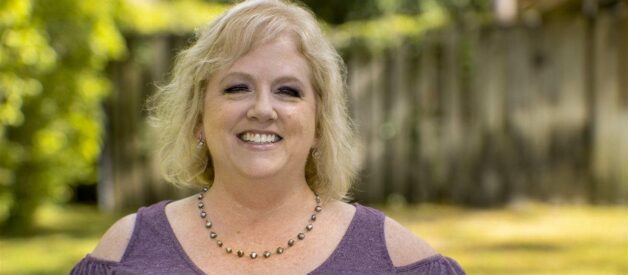(BPT) – Just two months after her 50th birthday, mother, dental hygienist, humanitarian and Florida native Caroline contracted shingles, changing her life in an instant.
‘For me, turning 50 meant starting a new chapter of my life. I knew something was wrong when I began to feel a sharp pain in my back and legs and saw red, itchy bumps on my thigh.’
Considering the Florida heatwave at the time, Caroline attributed the bumps to heat rash and, again, didn’t pay it much attention. Soon after, her rash quadrupled in size and she rushed to a walk-in clinic and learned she had shingles.
‘I was bedridden for nearly two weeks and I felt helpless. It was the most agonizing pain I’ve ever felt in my life,’ said Caroline.
Anyone who has gotten chickenpox is at risk of contracting shingles, also known as herpes zoster.[1] When chickenpox becomes dormant within the nerves, it can reactivate later in life, causing shingles.[2] Shingles typically presents as a painful, itchy rash that develops on one side of the body and can last for two to four weeks.[3]
‘I’ve experienced everything from kidney stones to multiple back, neck and knee surgeries and I can honestly say that nothing compares to the pain I felt from shingles,’ added Caroline.
Today, Caroline still finds herself struggling with the aftermath of shingles, including loss of stamina and extreme fatigue.
‘While I had shingles, I joined a Facebook support group to find ways to help manage the discomfort. Reading through the group posts, I was surprised to learn just how many people were suffering from shingles.’
At just 50 years old, Caroline had no idea she could be at risk. In fact, approximately one in three people in the United States will develop shingles in their lifetime.[4]
‘The pain of shingles is not something I’d want anyone to suffer from, especially because it’s preventable. I never imagined that shingles could bring my life to a complete standstill at 50.’
Caroline learned firsthand that shingles doesn’t play favorites. As a GSK spokesperson, Caroline is committed to educating about shingles and the vaccine available to help protect against it. ‘Whenever I can, I encourage people to get vaccinated and am proud to say that, because of my story, five other people have been vaccinated.’
If you’re 50 years of age and older, talk to your doctor about vaccination against shingles. Vaccination will help reduce the risk of developing shingles and the potential long-term pain from post-herpetic neuralgia, a common complication caused by the disease.
For more information, visit www.ShinglesDoesntPlayFavorites.com.
This is one person’s experience; other people’s experience with shingles may be different.
Content sponsored by GSK.
[1] CDC. Shingles (Herpes Zoster). About Shingles (Herpes Zoster). Available at: https://www.cdc.gov/shingles/about/index.html
[2] CDC. CDC Recommends Shingles Vaccine Press Release. Available at: https://www.cdc.gov/media/pressrel/2008/r080515.htm
[3] CDC. Shingles (Herpes Zoster). Signs & Symptoms Available at: https://www.cdc.gov/shingles/about/symptoms.html
[4] CDC. Vaccine Information Statements (VISs). Live Shingles VIS. Available at: https://www.cdc.gov/vaccines/hcp/vis/vis-statements/shingles.html
